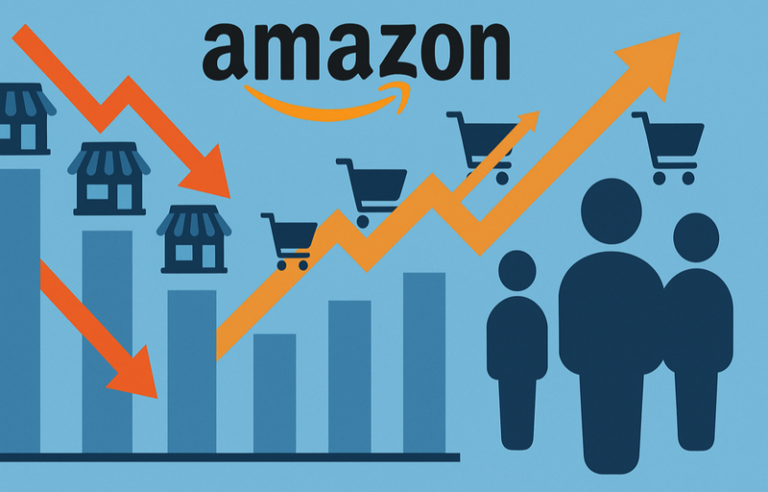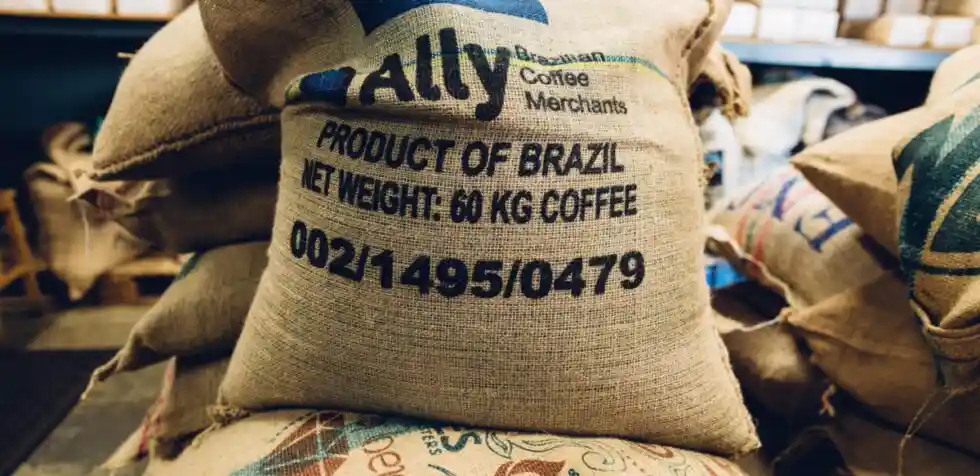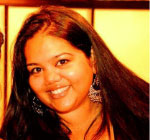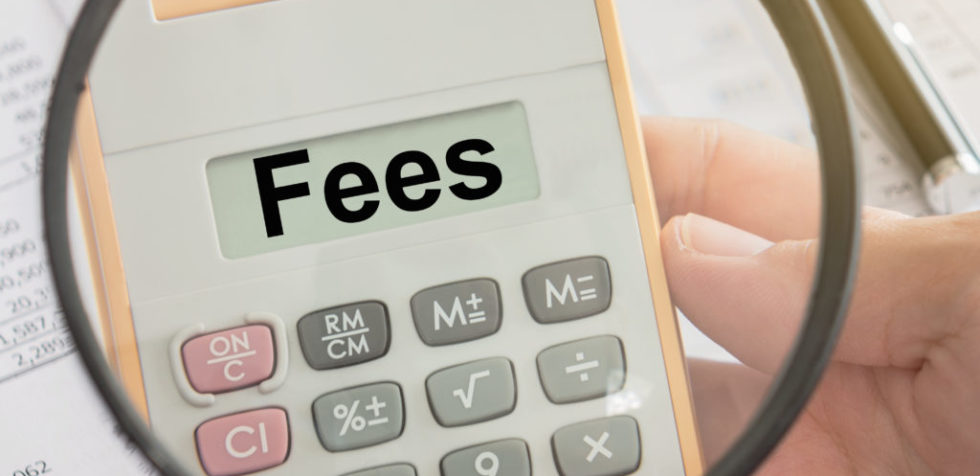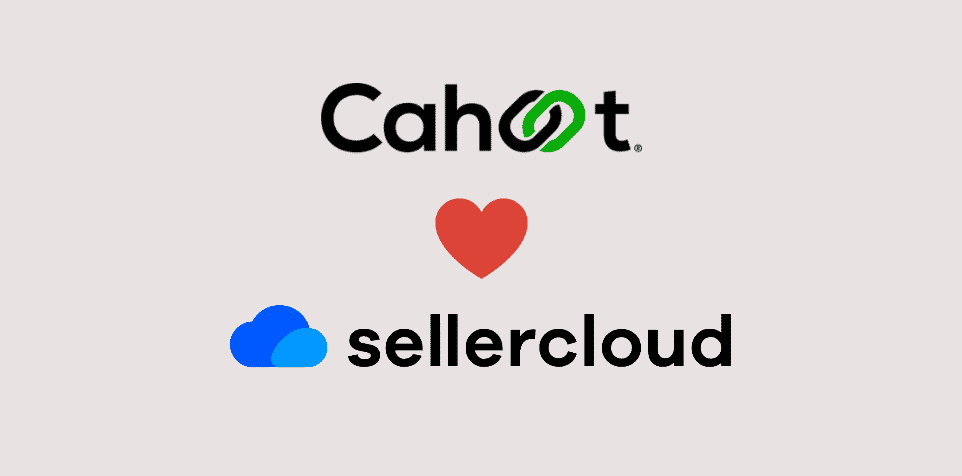Cahoot Named to Fast Company’s Prestigious List of the World’s Most Innovative Companies for 2021
In this article
BRIDGEPORT, CT (April 14, 2021) – Cahoot, the world’s first peer-to-peer eCommerce fulfillment network, announced that it has been named on the Fast Company’s Prestigious List of the World’s Most Innovative Companies for 2021. Cahoot enables brands and online retailers to affordably provide one-day and two-day delivery nationwide by storing and fulfilling goods for each other.
Fast Company’s Most Innovative Companies (MIC) list honors the businesses that have not only found a way to be resilient in the past year but also turned those challenges into impact-making processes. These companies did more than just survive; they thrived—making an impact on their industries and culture as a whole. This year’s list features 463 businesses from 29 countries.
“We are honored to be named one of the World’s Most Innovative Companies and recognized for our work. We are enabling businesses of any size to affordably offer their customers the same superfast delivery experience as Amazon” said Manish Chowdhary, Founder and CEO of Cahoot.
Like the Airbnb marketplace of homeowners and travelers, the patented Cahoot fulfillment network brings together the collective power of many SMBs and their warehouses to fulfill orders, thus reducing fulfillment costs and expediting delivery. Cahoot’s optimization algorithm further analyzes all combinations of warehouses, carriers, and shipping services to find the most affordable and efficient way to deliver orders fast.
With consumers flocking to online shopping in 2020 due to COVID, eCommerce grew an unprecedented 44% year-over-year, nearly three times the historical annual growth. At the height of the pandemic, even Amazon’s fulfillment services faltered. Customer orders took almost a month to arrive as warehouses struggled to fulfill orders. Amazon stopped accepting non-essential goods in its warehouses and prioritized its direct sales over those of its marketplace sellers, leaving hundreds of thousands of sellers that rely on its popular fulfillment service (FBA) scrambling for alternatives. Such incidents have caused merchants to always be prepared with a backup provider when they need it.
This eCommerce explosion has led to a shortage in warehouse space, well-priced and available labor, and carrier capacity. Warehouse vacancies reached an all-time low in Q3 2020 while rents were at an all-time high. LinkedIn also reported a surge of 73% job openings for fulfillment workers, the highest among all categories, and wages began creeping up. Moreover, all major carriers, including USPS, increased rates and added surcharges to handle the unprecedented increase in demand. All of this has resulted in much higher operational costs for retailers. And, at a time when most consumers are struggling financially, raising prices is not an option for merchants.
“Traditional solutions do not meet the needs of SMBs – unlike large corporations that have the power to negotiate aggressively with landlords and carriers to stay competitive. With Amazon pushing its popular prime membership program to transition from 2-day free delivery to now 1-day, even the largest retailers are facing logistical challenges. But Cahoot changes all that by intelligently aggregating the power of many,” said Chowdhary.
By unlocking previously unavailable warehouse capacity from tens of thousands of merchants across the U.S., Cahoot is transforming eCommerce fulfillment into a new collaborative model that’s more efficient. Cahoot’s fulfillment model is also environmentally friendly besides scaling up to meet the rising consumer expectations of free and fast delivery. And for the first time, online merchants can monetize their existing warehouse space and labor in a way previously not imagined or possible. “Before Cahoot, we didn’t really know how to leverage our extra space and fulfillment capacity. Becoming a Cahoot Fulfillment Partner has been a great way to make extra money without the hassle of becoming a full 3PL. Onboarding was fast and easy; Cahoot software is so efficient that we pick Cahoot orders before our own!” said Robert Hill, CEO of Seismic Audio Speakers.
With Cahoot, merchants can expand to regions previously too far for fast ground shipping and too expensive for expedited air shipping. “My customers now expect free 1-day and 2-day delivery, which is very expensive and difficult to provide. But with Cahoot, I can now offer 1-day delivery in both the East and the West with ground shipping, in addition to my home state of Kentucky,” said Darren Somerville of Impact Battery.
By providing fulfillment as a utility-like service as opposed to a competitive advantage previously available only to the largest and highly capitalized corporations, Cahoot aims to fuel even greater innovation – sure to benefit consumers around the world.
“Before Cahoot, we were selling only on Amazon. The inventory restrictions imposed by Amazon FBA were difficult for my business,” said Eli Miller, owner of Twinkle Toy. “Cahoot helped us grow by serving customers nationwide across multiple selling channels, including our own website. It’s a whole new opportunity that I would never have had without Cahoot.”
Cahoot’s shipping volume increased five-fold year-over-year in 2020. Many merchants have found success through Cahoot:
- A chocolatier in Brooklyn, NY, added 34% more sales just by outsourcing fulfillment to 2 additional locations.
- A prominent battery merchant in the Midwest maintained their Amazon Seller Fulfilled Prime eligibility by expanding 1-day ground coverage to 45%+ of U.S. consumers.
- Another merchant selling big, bulky products saved 88% on two-day delivery costs and tripled sales in just three weeks.
Fast Company’s editors and writers sought out the most groundbreaking businesses across the globe and industries. The World’s Most Innovative Companies is Fast Company’s signature franchise and one of its most highly anticipated editorial efforts of the year. It provides both a snapshot and a road map for the future of innovation across the most dynamic sectors of the economy.
Cahoot is available for merchants looking to expand their reach for one- and two-day delivery services across all popular selling channels, including Amazon, Walmart, eBay, Shopify, BigCommerce, and more. Merchants can reach a Cahoot fulfillment expert at www.Cahoot.ai
ABOUT CAHOOT
Cahoot is the world’s first peer-to-peer eCommerce fulfillment network that helps online businesses offer nationwide 1-day and 2-day deliveries. Cahoot offers drastically lower fulfillment fees because it enables merchants to store and ship the merchandise for each other. This novel business model also enables merchants to make extra money using their existing warehouse space and personnel.
ABOUT FAST COMPANY
Fast Company is the only media brand fully dedicated to the vital intersection of business, innovation, and design, engaging the most influential leaders, companies, and thinkers on the future of business. Fast Company’s Most Innovative Companies issue (March/April 2021) is now available online here, on iTunes, and on newsstands beginning March 16, 2021
Offer 1-day and 2-day shipping at ground rates or less.
Related Blog Posts

Peer-to-Peer Networks vs. Traditional 3PL For Order Fulfillment
Sellers seeking a better deal have often turned to Third Party Logistics Providers (3PLs). They do so with the ambition of not just regaining control and autonomy over their logistics, but also boosting their profits.
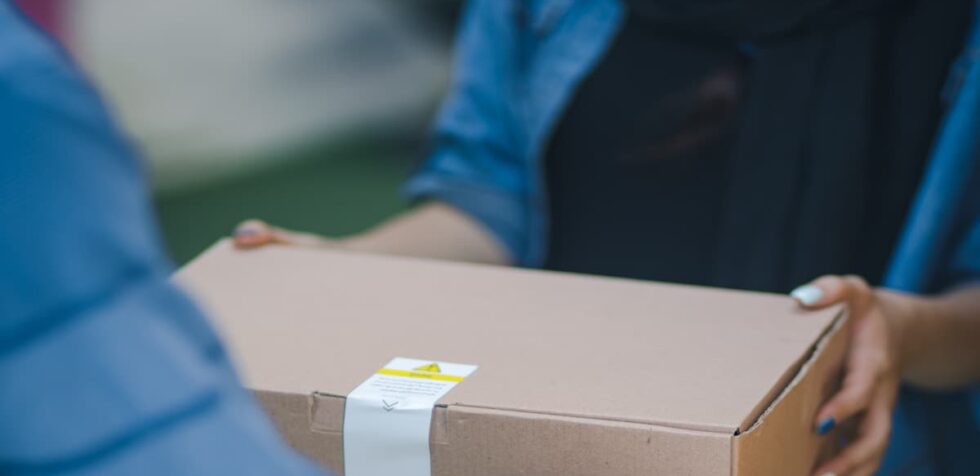
Peer-to-Peer Order Fulfillment for Efficient and Affordable Shipping
The network collaborates to speed up order fulfillment and distribute inventory closer to the customer. The objective is to reduce shipping costs and improve customer experience with better and faster shipping.

Ecommerce Innovators: Exploring Cahoot, the World’s First Peer-to-Peer Order Fulfillment Network
Cahoot is an ecommerce network where ecommerce brands and retailers can join as order fulfillment partners and monetize their spare warehouse capacity, similar to Airbnb
3PL Warehouse Food Grade: How To Choose | Cahoot Fulfillment
As more grocery sellers move to add online channels, they’re quickly discovering that the third party logistics industry hasn’t yet built up the specialized muscle needed to store and ship their products with the care they need. The growth of grocery online has caught logistics professionals off guard. After all, very few people bought food online as recently as 2019.
Just two years before the COVID pandemic, eCommerce made up only 2.7% of US grocery sales. Now, market forecasters expect it to make up a full 20% of the grocery market in 2026, an astounding growth rate.
Explosive growth can come with deep challenges, and many grocers that have added online channels have seen the promise of ecommerce turn sour due to high damage rates and inefficient shipping from their fulfillment partners. Unfortunately, many 3PL warehouses simply don’t know what it takes to offer top-notch services and manage food supply logistics effectively.
In this article, we’ll provide you with an inside look into what you need to look for in a 3PL that will support your profitable growth as an online food seller with food-grade warehouses.
What is Food Grade Warehousing?
Food grade warehousing refers to the specialized storage and handling of food products in facilities that meet stringent standards for cleanliness, sanitation, and safety. These warehouses are designed to protect the integrity and quality of food products, ensuring they remain safe for consumption throughout the storage period. Equipped with specialized equipment and staffed by trained personnel, food grade warehouses handle a variety of food products, including dry goods, frozen items, refrigerated products, and perishables.
In the food supply chain, food grade warehousing plays a critical role by preventing contamination, spoilage, and damage to food products. This ensures that the food reaching consumers is both safe and high-quality. By adhering to rigorous standards, food grade warehouses help maintain the trust and confidence of food manufacturers and consumers.
Importance of Food Safety in Warehousing
Food safety is paramount in food grade warehousing. Given the susceptibility of food products to contamination, spoilage, and damage, stringent food safety protocols are essential. These protocols include rigorous sanitation practices, effective pest control measures, and precise temperature control to inhibit the growth of harmful bacteria, mold, and other microorganisms.
Food grade warehouses must comply with regulations and standards set by authoritative bodies such as the Global Food Safety Initiative (GFSI) as well as legislation like the Food Safety Modernization Act (FSMA). These regulations ensure that food products are handled and stored in a manner that protects public health. By prioritizing food safety, food grade warehouses not only safeguard consumers but also uphold the reputation and reliability of the food supply chain.
What You Need From Your Food 3PL
While there are many similarities between fulfilling online orders for the food industry and general consumer packaged goods, food products have special needs that many third party logistics warehouses (3PLs) aren’t equipped to handle. Proper food handling practices are crucial to prevent contamination and ensure safety during storage and processing, with certifications like SQF and AIB validating adherence to these standards.
In this section, we’ll break down the added requirements that 3PLs need to excel in to provide excellent food grade order fulfillment.
FDA Approved Food Grade Warehouses
In 2011, the Food Safety Modernization Act (FSMA) raised the standards for manufacturing, processing, and storing food. An FDA-certified warehouse is a storage facility, food manufacturing plant, or order fulfillment center that is officially registered with the FDA to safely store food in accordance with the FSMA and food industry regulations.
The certification process ensures that the warehouse has a host of plans and procedures designed for the safe storage and handling of food products. Some elements include sanitation and cleaning procedures, glass and clear plastic policies, and pest control.
Relying on an FDA-approved warehouse as your food 3PL gives you the peace of mind that comes from knowing that your food products are stored safely, minimizing the chance of spoilage or contamination that could hurt customers and your ecommerce business.
In addition to FDA certifications, food-grade warehouses can acquire a number of other certifications from government and industry groups that indicate they are following up-to-date best practices for food handling and storage:
- Global Food Safety Initiative (GFSI) Recognized Certifications
- BRCGS (Brand Reputation Compliance Global Standards) Storage & Distribution – Ensures proper storage and transportation of food and packaging materials.
- SQF (Safe Quality Food) Storage & Distribution – A globally recognized standard that verifies food safety and quality management.
- IFS Logistics – Covers food and non-food storage and transportation requirements.
- FSSC 22000 (Food Safety System Certification) – Based on ISO 22000 and recognized by GFSI.
- ISO Certifications
- ISO 22000 – International standard for food safety management systems.
- ISO 9001 – Quality management system certification that ensures consistent service quality.
- Organic and Specialty Certifications
- USDA Organic Certification – For warehouses handling organic products, ensuring compliance with National Organic Program (NOP) standards.
- Non-GMO Project Verified – For warehouses storing non-GMO products.
- Gluten-Free Certification – Ensures compliance with gluten-free handling requirements.
- American Institute of Baking (AIB) – evaluates the safety, cleanliness, and compliance of food processing and storage facilities.
- Hazard Analysis & Critical Control Points (HACCP) Certification
- A preventive approach to food safety, identifying and managing potential hazards in food storage and handling.
Thanks to Cahoot’s unique peer-to-peer ecommerce model, we have warehouses that don’t just occasionally work with food products but instead have specialized in food order fulfillment for decades.
Climate Controls
One of the most important considerations when choosing an ecommerce fulfillment company is the type of climate conditions that your products will require. More than most other products, many foods have strict temperature limitations that must be followed, or products will be damaged. Many sellers assume that if they don’t need refrigeration, then any 3PL warehouse will do, but they learn the hard way that isn’t true.
Unfortunately, many 3PLs maintain warehouses at warmer temperatures in order to save money on air conditioning, which makes them too warm for many food items. Especially in summer months – and in the southern US – many warehouse temperatures rise into the 80s or even 90s Fahrenheit, which can irreversibly damage many food items and lead to a big write-down.
And product loss in the warehouse isn’t where the problem ends. Your outsourced warehouse team may not realize that products are damaged before they ship them out. Suppose you sell chocolates, and you have a product line that ships in opaque boxes. The warehouse team wouldn’t be able to see the damage, and if the warehouse temperature rose to melt the chocolate, shipments would continue without pause. That leads to a mass of customers all receiving damaged products at once, and when they take to social media to complain, it will create a lasting negative impression of your brand.
Therefore, it’s critical that the 3PL warehouse that you choose is equipped to handle, store, and ship your food items in optimal climate conditions so that your customers are able to receive the very best version of your product.
A good rule of thumb is to ask your 3PL warehouse whether they guarantee their warehouses at or close to room temperature. Since the most commonly shipped food items are designed to be stored in cool, dry conditions in a cupboard, they’re usually safe at 72 degrees. That being said, know your product! Refrigerated items will obviously require lower temperature ranges, and some other products don’t need refrigeration but do need more careful heat regulation than simply sitting at room temperature.
Careful Packaging For Safe And Efficient Shipping
One metric defines online seller profitability more than any other: customer lifetime value. With digital advertising becoming increasingly expensive, most sellers lose money on new customers. They’re only able to earn a positive bottom line through long-time repeat customers.
Proper food grade storage is essential before shipping to ensure food safety and compliance with regulations. Unfortunately for online food merchants, it’s more difficult to safely ship fragile foods and glass than it is to ship other goods. Without a food 3PL that knows how to treat such delicate items, your margins will quickly be overwhelmed by unhappy customers demanding refunds for damaged goods.
In addition to limiting damage, a 3PL warehouse that knows food logistics inside and out also knows that orders come in many more shapes and sizes than they often do for other merchants. Grocery orders tend to consist of many different items and many different quantities. This introduces significant packaging uncertainty for untrained order fulfillment personnel, and it can lead to inefficiently packed boxes that inflate shipping costs.

Cahoot uses a combination of intelligent packing software and responsive customer service to get the packaging right for the toughest goods to ship. We optimize for two things: we keep the package as small as possible to minimize shipping cost while also getting damage rates as close to 0% as possible.
Our warehouses that specialize in food have a direct line to discuss tricky packing challenges with our control team, and this leads to a process of continuous improvement. Our software is constantly learning new ways to reduce damage rates and costs. In this way, you save money on shipping while also ensuring that your customers are delighted when they open up their products every time.
Responsive Customer Service
Though responsive customer service is important for all online sellers, it’s especially important for a food 3PL, given the additional attention that is needed. You need to be able to get in touch with your customer service team quickly to feel confident that they know how to excel with your products and troubleshoot solutions for tricky challenges.
You need a 3PL company that offers you a real person to work with your account and multiple ways to get in touch with them. Cahoot clients love our easy-to-reach and proactive customer service team. Our team is based in the USA, and they take the time to get to know your ecommerce business, so you don’t have to start at square one with a new person every time you submit a ticket. The close relationship we forge with our sellers is foundational to our ability to go above and beyond as a food 3PL.
Evaluating a Food Grade Warehouse
When evaluating a food grade warehouse, it’s crucial to assess its ability to meet high standards for cleanliness, sanitation, and safety. Here are key factors to consider:
- Certifications: Look for certifications such as SQF, AIB, and Organic. These certifications indicate that the warehouse adheres to specific standards for food safety and quality.
- Sanitation and Pest Control: Ensure the warehouse has a robust sanitation and pest control program to prevent contamination and infestation. This includes regular cleaning schedules and effective pest management strategies.
- Temperature Control: Verify that the warehouse has adequate temperature control measures to prevent spoilage and damage to food products. This is especially important for perishable and temperature-sensitive items.
- Inventory Management: Assess the warehouse’s inventory management system to ensure it can effectively track and manage food products. Efficient inventory management helps in maintaining product quality and reducing waste.
- Staff Training: Ensure that warehouse staff are well-trained in food safety and handling procedures. Proper training minimizes the risk of contamination and damage to food products.
- Regulatory Compliance: Verify that the warehouse complies with relevant regulations and standards, such as the Food Safety Modernization Act (FSMA). Compliance ensures that the warehouse operates within legal and safety guidelines.
By thoroughly evaluating these factors, you can ensure that a food grade warehouse meets the necessary standards for safely and efficiently storing and handling food products. This not only protects consumer health but also enhances the reliability and efficiency of the entire supply chain.
Cahoot: Experienced Food Grade Warehouses
Cahoot is different from other 3PLs. Our innovative peer-to-peer model sets us apart by enabling us to offer low-cost, fast order fulfillment by design for a huge variety of specialized industries.
So, how do peer-to-peer ecommerce services work better than old order fulfillment networks?
We recruit top-tier ecommerce merchants with their own warehouses to join our network as fulfillment partners, and then our intelligent shipping software and control team keeps the whole system connected and running efficiently. Since we’re unlocking excess order fulfillment capacity that was lying idle, we’re able to offer lower costs. And crucially for online grocers, we’re able to recruit merchant-operated warehouses that already specialize in fulfilling their own food – and thus are already up to speed as food grade warehouses.
Unlike other 3PL warehouses that are building cookie-cutter warehouses designed to store easy-to-fulfill goods, we have specialists in temperature-controlled fulfillment, hazmat, and more. Our flexibility is part of what distinguishes us and makes us the best choice for sellers seeking a reliable food-quality 3PL partner.
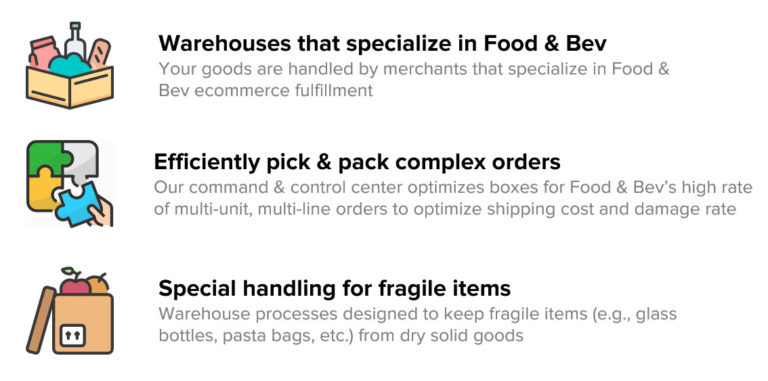
Our technology further improves our ability to power food-grade logistics by constantly optimizing how we pack orders. The shipping software partners with human judgment to learn the best packing combinations for tricky food orders, so we’re able to minimize damage rates and use small packages to limit shipping costs. And, of course, since our merchant-operated warehouses know how important special handling is for food products, they take extra pride in ensuring that your products are safely stored and moved.
If you’d like to find out how Cahoot can help your ecommerce business, please get in touch with us. We’ll design a custom order fulfillment service for you that will meet your exact food-grade needs.
Frequently Asked Questions
What is 3PL cold storage?
3PL cold storage refers to temperature-controlled warehousing and distribution services for perishable goods offered by many 3PLs. These facilities specialize in storing and handling products that require refrigeration or freezing, such as dairy, meat, seafood, frozen meals, pharmaceuticals, and certain chemicals.
What regulations must a food-grade 3PL provider follow?
Food-grade third-party logistics (3PL) providers must comply with several regulations to ensure food products are stored and handled safely. Key requirements include:
- FDA Registration: All food-grade warehouses must be registered with the FDA and undergo regular inspections.
- FSMA Compliance: Facilities must implement a comprehensive Food Safety Plan managed by a Preventative Controls Qualified Individual (PCQI).
- GMPs & HACCP Plans: Good Manufacturing Practices (GMPs) and Hazard Analysis Critical Control Points (HACCP) ensure food safety and risk mitigation.
- Third-Party Audits: Many food-grade warehouses are subject to independent audits by organizations such as ASI Food Safety or the Safe Quality Food Institute (SQFI).
- Pest Control & Sanitation: Strict pest control, sanitation, and hygiene protocols must be followed to prevent contamination.
What factors should businesses consider when choosing a food-grade 3PL provider?
When selecting a food-grade 3PL provider, businesses should consider several factors to ensure compliance and efficiency, including experience & certifications, temperature integrity, lot traceability, prevention of cross-contamination, and GMP audit readiness.
What can disqualify a warehouse from being considered food-grade?
A warehouse may lose its food-grade status if it fails to maintain sanitation, temperature control, and compliance with regulatory standards. Common disqualifications include:
- Structural Issues
- Poor Sanitation Practices
- Improper Storage
- Lack of Temperature Control
- Regulatory Non-Compliance

Up to 64% Lower Returns Processing Cost
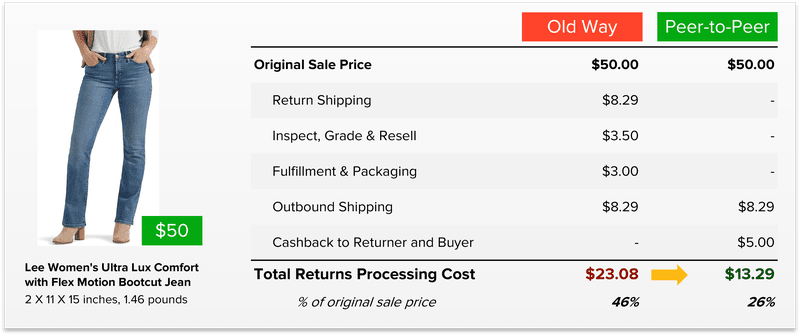
Amazon FBA Fees Explained: A Seller’s Breakdown
In this article
 10 minute
10 minute
- What Is Amazon FBA?
- Benefits of Using Amazon FBA
- Comprehensive Breakdown of FBA Fees
- Amazon SIPP Program: What It Is & How It Saves You Money
- Calculating Amazon FBA Seller Fees
- FBA vs FBM vs SFP: Which Fulfillment Model Is Best?
- FBA vs 3PL: Which Is More Cost-Effective?
- Is Amazon FBA Right for You?
- Frequently Asked Questions
Have you ever wondered how Amazon merchants selling $2 items can possibly make a profit? The truth is that they are not.
In fact, most Sellers fail to calculate all of the fees associated with selling on Amazon and end up losing money as a result. To make matters worse, Amazon doesn’t exactly make it easy for merchants to tabulate all of the costs associated with selling on its marketplace and there are many hidden costs that Amazon doesn’t tell you about.
This guide will walk you through everything you need to know about FBA, including how it works, the full breakdown of Amazon fees, hidden costs that Sellers often overlook, and comparisons with alternative fulfillment options like FBM (Fulfilled by Merchant), SFP (Seller Fulfilled Prime), and third-party logistics (3PL) providers.
What Is Amazon FBA?
FBA is a fulfillment service where Amazon stores, picks, packs, and ships products on behalf of its third-party (3P) Sellers. Additionally, it manages customer service and returns, making it an attractive option for businesses that want to scale without handling logistics themselves.
For Sellers looking to maximize their business potential, Amazon offers a professional selling plan that includes additional tools, services, and reporting features.
How FBA Works: Step-by-Step
- Send Inventory to Amazon – Sellers ship products to Amazon’s fulfillment centers. They can choose to split inbound inventory and ship to the addresses Amazon provides, or Amazon will charge an inbound placement fee for distributing inventory on their behalf. This fee varies based on the product’s size and shipping weight.
- Storage – Amazon stores the inventory until an order is placed.
- Order Processing & Shipping – Once a customer makes a purchase, Amazon picks, packs, and ships the order.
- Customer Service & Returns – Amazon manages inquiries, returns, and refunds for FBA orders.
Benefits of Using Amazon FBA
- Prime Eligibility – Products are automatically eligible for Amazon Prime’s fast, free shipping, making them more attractive to buyers.
- Hands-Free Logistics – Amazon handles storage, shipping, customer service, and returns.
- Scalability – Sellers can scale their business without worrying about fulfillment logistics or hiring staff.
- Better Buy Box Placement – FBA products often have an edge in winning the Buy Box, increasing sales potential.
- Revenue Calculator – A tool that helps Sellers estimate referral fees and potential profits, assisting in making informed decisions about their fulfillment methods.
However, these benefits come with a cost. Let’s break down the fees involved.
Comprehensive Breakdown of FBA Fees
Amazon FBA fees vary based on product size, weight, and storage duration. Understanding the various selling fees is crucial for accurately calculating total selling costs and maintaining profitability. Below is a detailed breakdown.
1. Fulfillment Fees (Per Unit)
FBA fulfillment fees cover picking, packing, and shipping and are determined by the size and weight of the item, and it’s important to understand these fees for effective pricing strategies.

2. Monthly Storage Fees
Amazon charges Sellers a monthly fee for storing inventory in its fulfillment centers. The following are the 2025 base monthly rates and they increase as Storage Utilization Surcharges are applied after 22 weeks in storage. For standard-size products in non-peak season, these surcharges increase the total storage cost by more than 56% after week 22, and nearly double after 28 weeks in storage, etc. This assumes products are not classified as ‘dangerous’:
Period |
Standard Size (per cubic foot) |
Oversized (per cubic foot) |
|---|---|---|
January – September |
$0.78 |
$0.56 |
October – December (Peak) |
$2.40 |
$1.40 |
3. Long-Term Storage Fees
If inventory is stored for over 365 days, Amazon applies long-term storage fees (called the Aged Inventory Surcharge):
- $6.90 per cubic foot OR
- $0.15 per unit (whichever is greater)
Sellers need to closely monitor inventory levels to avoid these charges.
4. Referral Fees
Referral fees are percentage-based fees on each sale, varying by category. It’s the base fee that’s paid by all Amazon Sellers for the privilege of selling on the Amazon marketplace, whether orders are Seller-fulfilled (a.k.a. FBM) or fulfilled by Amazon (FBA). Most categories are charged between 8-15%.
Product Category |
Referral Fee |
|---|---|
Electronics |
8% |
Beauty & Health |
15% |
Books |
15% |
Apparel |
17% |
5. Removal & Disposal Fees
If a Seller wants to remove inventory from Amazon warehouses, they pay:
- Standard-size items: $0.52 – $1.51 per unit
- Oversized items: $1.51 – $4.10 per unit
Disposal fees are slightly lower but still add up over time.
6. Returns Processing Fees
For certain categories like apparel, shoes, and jewelry, Amazon charges the Seller for returns, equivalent to the fulfillment fee for that product.
7. Refund Administration Fees
Refund administration fees are an essential aspect of Amazon FBA fees that Sellers need to be aware of. When a customer requests a refund, Amazon charges a refund administration fee to process it. This fee is either $5.00 or 20% of the refunded charge, whichever is less.
These fees are deducted from the Seller’s Amazon account balance. If the account balance is insufficient, the refund administration fees are charged to the Seller’s credit card. It’s crucial for Sellers to monitor these fees closely, as they can add up quickly, especially in categories with high return rates. Keeping an eye on refund administration fees and understanding their impact on your overall profitability is vital for effective financial management.
8. Low-Inventory-Level Fee and Aged Inventory Surcharge
Amazon imposes a Low-Inventory-Level Fee (in addition to other storage fee types) to encourage Sellers to manage their inventory efficiently and maintain sufficient inventory to fulfill new orders. This fee applies to standard-size products with consistently low inventory relative to customer demand. It starts at $0.32 per cubic foot and reaches $1.11 per cubic foot, based on a “historical days of supply” metric.
In addition to the Low-Inventory-Level Fee, Amazon also charges an Aged Inventory Surcharge for items stored for more than 365 days. This surcharge is $6.90 per cubic foot per month. To avoid these fees, Sellers should regularly review their inventory levels and remove slow-moving or obsolete items. Effective inventory management can help minimize these additional costs and improve overall profitability.
Hidden or Lesser-Known Amazon FBA Seller Fees
Sellers often overlook these extra costs:
- Unplanned Services Fees – Charged when inventory arrives without proper labeling or packaging.
- Inbound Shipping Costs – Amazon doesn’t cover shipping to their warehouses, Sellers must pay for it.
- Selling Plan Fees – Costs associated with the Individual or Professional selling plans, providing access to various tools and services.
Amazon SIPP Program: What It Is & How It Saves You Money
The Ships in Product Packaging (SIPP) program lets Sellers send products in their own packaging (or native retail packaging), eliminating Amazon’s additional packing materials.
SIPP Fee Discounts
By participating in SIPP, Sellers receive discounts on fulfillment fees ranging from $0.04 to $1.32 per unit, depending on size and weight. Compared to standard FBA fees, SIPP reduces costs while supporting sustainability.
Program |
Fee Reduction |
|---|---|
SIPP (Standard-Size) |
$0.04 – $0.23 per unit |
SIPP (Large Bulky, <50 lb) |
$0.58 – $1.32 per unit |
Calculating Amazon FBA Seller Fees
Calculating Amazon FBA Seller fees can be complex, but understanding the various fees involved is crucial for maintaining profitability. Here’s a step-by-step guide to help you navigate the process:
- Determine Your Selling Plan Fee: Choose between the Individual plan, which costs $0.99 per item sold, or the Professional plan, which has a monthly subscription fee of $39.99.
- Calculate Your Referral Fee: This fee is a percentage of the total sales price and varies by product category, typically ranging from 5% to 15%.
- Calculate Your Fulfillment Fee: This is a flat fee per unit, determined by the product’s size and weight, ranging from $3.06 to $6.62 for standard-size items under 3 pounds (excluding apparel which commands slightly higher fees).
- Calculate Your Shipping Cost: This is the cost of shipping the item to the customer, which can vary depending on the shipping carrier and method.
- Add Any Additional Fees: These may include high-volume listing fees, rental book service fees, or refund administration fees.
By following these steps, you can get a clear picture of your Amazon FBA Seller fees and ensure that your pricing strategy covers all costs, helping you maintain profitability.
FBA vs FBM vs SFP: Which Fulfillment Model Is Best?
Fulfillment Model |
Best For |
Prime Eligibility |
Control Over Shipping |
Storage & Shipping Costs |
|---|---|---|---|---|
FBA |
High-volume Sellers |
✅ Yes |
❌ No |
Moderate to High FBA fulfillment costs |
FBM (Fulfilled by Merchant) |
Low-margin or niche Sellers |
❌ No |
✅ Yes |
Can be lower depending on product size and weight |
SFP (Seller Fulfilled Prime) |
Established Sellers with robust logistics |
✅ Yes |
✅ Yes |
Varies depending on ship distance and speed requirements |
Which One Should You Choose?
- FBA: Best for Sellers who prioritize Prime eligibility and hands-off logistics.
- FBM: Ideal for low-margin products or Sellers that either have their own fulfillment infrastructure or partner with a modern and high-quality 3PL.
- SFP: Works well for brands who want Prime benefits and either have established fulfillment capabilities or outsource fulfillment to a 3PL that supports SFP.
FBA vs 3PL: Which Is More Cost-Effective?
A third-party logistics provider (3PL) can be an alternative to FBA. Here’s how they compare:
Factor |
Amazon FBA |
3PL Provider |
|---|---|---|
Fulfillment Cost |
High unless products are small and light |
Lower for higher order volumes |
Brand Control |
Limited |
Full control |
Customer Service |
Amazon handles |
Seller handles |
Storage Fees |
Monthly charges, punitive long-term fees |
Monthly charges, long-term fees vary but are lower |
3PLs are best for Sellers who need lower storage fees, more branding control, and multi-channel fulfillment. FBA is best for Sellers looking for speed, Prime access, and hands-free logistics.
Is Amazon FBA Right for You?
Amazon FBA is a powerful fulfillment option, but understanding the full cost structure is key to maintaining profitability. While FBA provides logistical ease, Prime access, and customer service, it also comes with various fees that can quickly destroy margins, making a business unprofitable if they’re unable to actively manage the program.
To maximize profits:
- Track your FBA fees regularly using the reports available in the Professional Selling plan and optimize inventory to avoid long-term storage charges.
- Consider SIPP if your products qualify for reduced fulfillment fees.
- Compare FBA with FBM, SFP, and 3PLs to find the best fulfillment model for your business.
With the right strategy, Amazon FBA can be a game-changer for your ecommerce success! It just takes work and reliable monitoring to make adjustments before fees get out of control.
Frequently Asked Questions
What is Amazon FBA?
Amazon FBA is a fulfillment service offered by Amazon that allows Sellers to store their products in Amazon’s fulfillment centers. Amazon handles the packaging, shipping, and customer service for these products.
How much does Amazon FBA cost?
Amazon FBA costs vary depending on the product size, weight, and shipping method. Sellers can expect to pay a flat fulfillment fee per unit, ranging from $3.06 to $6.62 for standard-size items under 3 pounds. Larger and heavier items can expect to pay between $9.61 and $194.95, or more if a product is more than 150 pounds.
What is the difference between Amazon FBA and FBM?
Amazon FBA is a fulfillment service where Amazon handles the logistics, while FBM (Fulfillment by Merchant) is a fulfillment method where the Seller manages the packaging, shipping, and customer service themselves.
How do I calculate my Amazon FBA Seller fees?
To calculate your Amazon FBA Seller fees, you need to determine your selling plan fee, referral fee, fulfillment fee, shipping cost, and any additional fees. Understanding these components will help you price your products effectively and maintain profitability.

Up to 64% Lower Returns Processing Cost

How To Value Your eCommerce Business: A Comprehensive Guide
In this article
 15 minutes
15 minutes
- How to Value an E-Commerce Business
- SDE
- EBITDA
- What are Add-Backs?
- What About Inventory?
- Pricing Windows
- What Goes Into a Multiple?
- Growth Trends
- Business Age
- Owner Involvement
- Stability of Earnings
- Strength of your Supply Chain
- Diversity of SKUs
- Stability and Diversity of Traffic
- Protecting Your Products
- Reap the Rewards of Your Hard Work through an Accurate Valuation
Building an eCommerce business can be an exhilarating and lucrative journey. You’ve likely poured your heart and soul into growing your brand, meticulously selecting products, and building an efficient supply chain.
However, when it comes to putting a price tag on your business, it’s not just about the sweat and toil you’ve invested. There are many other factors that come into play.
Whether you’re thinking about selling soon or simply want an accurate gauge of your business’s performance, understanding how to value your business is crucial.
We’ve sold hundreds of eCommerce businesses on our marketplace, so we know a thing or two about accurate valuations.
In this article, we’ll share some of that knowledge with you, taking a closer look at the factors that play a pivotal role in the valuation process.
So, let’s explore the ins and outs of valuing your eCommerce business.
How to Value an E-Commerce Business
While you likely already have a figure in mind when it comes to how much your business is worth, accurately valuing an eCommerce business hinges on important, measurable factors instead of gut feel.
While many factors play a role in valuations, the actual valuation formula is surprisingly simple.
Average Net Profit X Multiple = Valuation
As you can see, your net profit plays an important role in your valuation. This is because, for the most part, the more money a business makes, the more it is worth.
When calculating your net profit, it’s best to use a rolling 12-month average to account for any fluctuations in earnings or any seasonality the business experiences.
There’s more that goes into a valuation that we’ll discuss later on, but first, let’s take a closer look at the two most common methods used to calculate net profit.
SDE
The first and most commonly used method is called seller discretionary earnings (SDE).
The idea here is to level the playing field by removing the current owner of the business from the equation. This allows for easier comparisons between different businesses, as it standardizes the earnings calculation by eliminating owner-specific variables.
To figure out SDE, you start with the business’s profit. Then, you add back the money the owner pays themselves, as well as any special benefits they get from the business (like health insurance).
One-time or non-recurring expenses are added back too, as they won’t affect a new owner. Non-cash expenses like interest, taxes, and depreciation are also added back, along with any other discretionary expenses.
SDE is the most common valuation method and most suitable for businesses up to around $5 million in annual revenue.
When businesses earn over this amount, they usually have a more complex structure in terms of a hierarchy of staff, as well as multiple stakeholders. This is where the EBITDA model comes in.
EBITDA
The Earnings Before Interest, Taxes, Depreciation, and Amortization (EBITDA) method uses a similar approach to SDE but acknowledges that larger businesses aren’t owner-operated in the same way.
When businesses scale up and get more complex, they often have a whole hierarchy of staff and multiple stakeholders. Therefore, unlike SDE, EBITDA won’t add back salaries for managers and employees, considering them necessary operational costs.
While EBITDA is a powerful tool, we won’t dive too deeply into it here, as it’s typically more relevant to larger enterprises and is unlikely to apply to many business owners reading this.
Nevertheless, understanding these two methods allows you to choose the right tool for the right job when it comes to assessing the value of your business. So whether you’re running a small Amazon FBA business or a bustling eCommerce empire, there’s a valuation method tailored to your unique circumstances.
What are Add-Backs?
Add-backs are costs that a new owner doesn’t need to incur to keep the business running. These expenses can also include one-time costs that won’t recur.
For instance, if you run an Amazon FBA business, the associated Amazon fees are considered a necessary operating expense. On the other hand, expenses related to a home office are not essential because eCommerce businesses can typically be managed remotely.
Therefore, a new owner wouldn’t need to continue the home office expense. This is why a home office is considered an acceptable add-back, while Amazon fees are not.
Some other examples of add-backs may include:
- Trademark expenses
- Personal travel costs
- A one-time website redesign
- Co-working space fees
- Subscription fees to industry newsletters and communities
It’s important to note that there can be some ambiguity regarding what qualifies as an add-back, and there might be disagreements between the broker, buyer, and seller.
Generally, eCommerce store add-backs tend to be relatively small compared to the overall earnings of the business. Therefore, if certain costs are not added back in, they usually won’t have a significant impact on the final valuation.
In case there’s uncertainty or disagreement about an add-back, it’s crucial to ensure that it’s clearly documented in the profit and loss (P&L) statement. This transparency allows potential buyers to analyze the add-back as part of their due diligence process, helping them make informed decisions about the business.
What About Inventory?
When it comes to determining the value of an eCommerce business, inventory is normally excluded from the calculation.
Inventory only becomes significant when your store has recently faced stock shortages or foresees upcoming supply chain or manufacturing difficulties.
The reason behind this exclusion is that if the buyer can’t sell the inventory, it loses its value. Moreover, perishable goods may, well, perish if they can’t be sold quickly.
For these reasons, inventory is typically treated as an additional cost for the buyer, based on the product’s landed cost. This approach ensures fairness for both the seller and the buyer.
At Empire Flippers, we don’t charge a commission on the inventory’s cost, but it’s worth noting that some business brokers do. It’s crucial to consider what happens to inventory when selecting a broker for selling your business.
Pricing Windows
Referring back to the valuation formula, we mentioned that it’s best to use a rolling 12-month average in your calculation. This is known as a pricing window.
It’s essentially the length of time we calculate the profits over. The length of the pricing window can fluctuate to best reflect the current state of the business.
A 12-month pricing window is the most desirable option as it presents the most accurate representation of the business as a whole, rather than only capturing a sharp period of growth or decline.
For example, if you sell jet skis, you likely experience a slump in sales over the winter months, and then an increase in summer, with a larger boost over the summer holidays. A 12-month pricing window will accurately reflect these ups and downs.
Since a 12-month window gives the most accurate reflection of the business’s health, it makes the business more desirable to buyers.
That said, there are some instances where you may want to use a shorter pricing window.
This is most common in businesses that have experienced rapid growth or steep decline. It may have taken a hit from a Google algorithm update and declined as a result, or it could be experiencing an acceleration of demand. In these cases, the current state of the business may be drastically different compared to 6 months ago.
A shorter pricing window can also benefit fledgling businesses where the initial months were primarily about getting the business off the ground. During this early phase, revenue tends to surge, and the most recent six months better depict the business’s present state.
A shorter pricing window reflects a level of uncertainty and instability and therefore results in a lower multiple and smaller pool of buyers.
Speaking of multiples, let’s take a closer look at what goes into this crucial part of the valuation formula.
What Goes Into a Multiple?
The multiple is essentially a representation of the strength, stability, and potential of your business. In other words, all of the other things buyers care about over and above profitability.
Almost all aspects of your business will be considered when determining a multiple.
Here are some of the main considerations that will be taken into account when valuing an eCommerce business.
Growth Trends
The direction your business is heading is one of the first things buyers scrutinize when assessing whether your business is the right fit for them.
Clearly, upward growth is more enticing than the opposite, and it often leads to a higher valuation for your store.
Yet, it’s not just about whether you’re growing; the rate of growth matters too.
While hyper-growth is exciting, most buyers prefer a sustainable eCommerce store. Rapid expansion can be unpredictable, leaving buyers wondering where it will plateau. Scaling aggressively can also come with inefficiencies, which buyers will investigate during due diligence.
At the end of the day, businesses that can demonstrate stable, healthy growth trends will attract the largest pool of buyers.
But if your business doesn’t fall into this category, don’t let that deter you from putting your business on the market. While most buyers look for growing businesses, others seek businesses with untapped potential in processes or marketing channels, recognizing room for improvement.
Even declining businesses can find buyers, though the severity of the decline will affect the valuation. These businesses generally command lower multiples due to the reduced buyer interest.
Business Age
A business is typically judged on its track record, with buyers assessing the consistency of its profitability and performance over time.
While many businesses experience rapid or gradual growth over a short period, one that consistently earns over several years proves its stability.
It also takes time for a business to establish itself within a niche. A long-standing business showing steady growth has likely secured a position as a leader in its specific market segment.
Therefore, businesses with a longer track record typically receive higher valuations.
A business with less than a year of profitability is considered young, lacking sufficient data to demonstrate market staying power.
Once a business crosses the two-year mark, it likely finds its footing, catching the attention of more buyers. For those with three or more years of profitability, they’ve not only proved their worth but can often command a higher multiple.
Owner Involvement
For the most part, buyers are looking for an investment, an opportunity that will get them one step closer to financial freedom. They are not looking for a full-time job that requires them to work tirelessly after investing thousands of dollars.
While it can be challenging to entrust others with your hard-built store, excessive owner involvement can deter potential buyers.
Ideally, spending around five to ten hours a week on your business is acceptable, but beyond that, it may adversely impact the valuation multiple.
Fortunately, many eCommerce tasks can be outsourced, such as order fulfillment and customer service, often without the need for full-time employees. Implementing standard operating procedures (SOPs) simplifies task delegation and can be valuable during the sale process, helping buyers understand your operations.
Before selling, communicate with freelancers you’ve employed to ensure their willingness to collaborate with the new owner. Transferring your team streamlines the transition and enhances your business’s appeal.
Put simply, the key to making your business more marketable and scalable is to make yourself redundant.
Stability of Earnings
Buyers are on the hunt for a healthy business that promises a solid return on their investment. This makes the stability of your earnings a key concern.
Steady earnings indicate that your business operates on optimized processes, you have a reliable supply chain, and an established customer base.
Unstable earnings, on the other hand, may point to underlying issues within the business, such as inventory mismanagement or a lack of product-market fit.
Stability in your earnings also indicates that your business has built-in defensibility to help it ride out natural fluctuation in the market.
At the end of the day, buyers are looking for an income they can rely on, regardless of changing trends or economic conditions.
Strength of your Supply Chain
Your supply chain forms the very backbone of your eCommerce store, with the success of your business hinging on how products are manufactured and delivered to your customers.
To fortify your supply chain, consider sourcing from at least two different manufacturers, ideally from different countries. This strategic move provides flexibility, allowing you to pivot quickly to avoid unexpected delays, as demonstrated during the global pandemic’s restrictions.
Outsourcing fulfillment is equally crucial. Handling inventory in-house can complicate the sale of your business. Remember, the majority of buyers are looking for a streamlined, turnkey business. They don’t want the complication of managing fulfillment and storage over and above running the business.
Consider hiring a third-party logistics (3PL) provider. These specialists manage inventory and ensure timely customer delivery.
Formalize agreements with manufacturers and fulfillment providers whenever possible. Buyers will value transferable deals, especially if you’ve negotiated advantageous rates. Contracts can serve as valuable assets for your business.
Diversity of SKUs
Buyers will also pay close attention to the diversity of your product offerings.
Having a variety of different products prevents the business from relying solely on one item. You’re essentially ensuring that all your eggs aren’t in one basket.
If one product faces a drop in popularity, gets delisted on platforms like Amazon, or falls out of favor due to new laws or regulations, your business can still thrive thanks to the revenue generated by your other products.
All of this works towards protecting the buyer’s return on investment once they take over the business.
Stability and Diversity of Traffic
Much like with your earnings, buyers are looking for stability when it comes to traffic growth. Buyers will want to dig deeper into any sudden spikes or dips in traffic to understand the underlying reasons behind these fluctuations.
Buyers and business brokers will also need an easy way to view your traffic data, so it’s a good idea to have an analytics platform like Google Analytics or Clicky installed on your website. To protect any sensitive data, make sure you give buyers read-only access.
This will allow buyers to look at data like:
- The geographic sources of your traffic
- Top-performing website pages by traffic percentage
- The bounce rate.
These details provide valuable insights into what’s working effectively and where potential opportunities lie.
Traffic channels that drive revenue are another area where diversification is key. While most eCommerce businesses use paid advertising to attract customers, pairing this with organic traffic from search engine optimization (SEO) is particularly attractive.
Unlike paid ads, SEO requires minimal ongoing investment once it’s established. Having a strong social media following and a robust email list are also great ways to diversify your traffic.
Protecting Your Products
Trademarks are another factor that speaks to the longevity of your business.
A buyer doesn’t want to purchase the business only to have a competitor undercut the business by selling the same products.
Trademarking your products shields your brand identity and reputation from copycats and counterfeit products, reassuring buyers and reducing the risk of competition dilution.
If you sell on Amazon, registering your brand as part of Amazon’s Brand Registry adds yet another layer of defensibility to your business.
Reap the Rewards of Your Hard Work through an Accurate Valuation
Knowledge really is power. When it comes to making a life-changing decision like selling your eCommerce business, you’ll want all the power you can get.
Knowing how to value your business empowers you to make informed choices.
This knowledge means you won’t go into a sale blind. You’ll be armed with the information you need to confidently negotiate with buyers and avoid falling for lowball offers.
Understanding the metrics and factors that play a role in valuations also gives you a checklist to work from in order to increase the value of your business and make it more attractive to buyers.
As you can see from this article, valuing an eCommerce business is a complex and nuanced process. But don’t let that stop you. If you’re not a numbers person or simply don’t have the time to do in-depth calculations, you can use our free valuation tool to get an idea of how much your business is worth.
Discovering the true value of your eCommerce business gets you one step closer to a profitable exit!
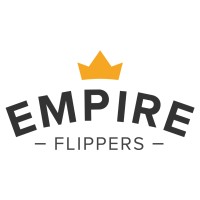
Lauren Buchanan, Empire Flippers
Offer 1-day and 2-day shipping at ground rates or less.
Related Blog Posts
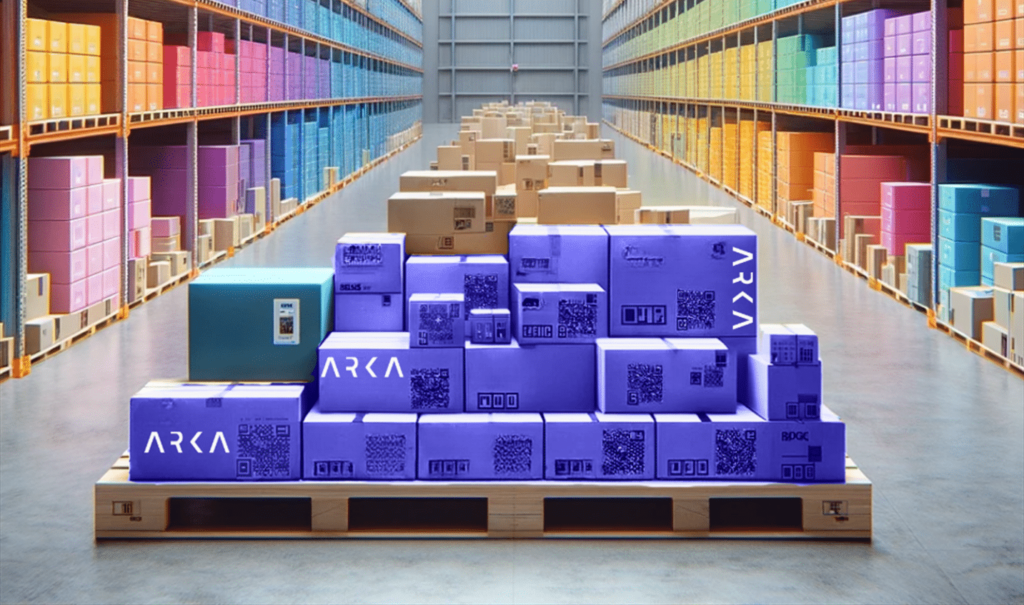
Packaging Design That Will Make Fulfillment Easy and Cut Costs
E-commerce Revolution with Strategic Packaging Solutions Like anyone in the e-commerce world, small business owners are always looking for ways to streamline their operations

USPS Hazmat Shipping Guidelines – How to Ship Fast While Staying Compliant
Hazardous Materials What is a Hazardous Material? What Items Are HAZMAT? Classes of HAZMAT Items What Classes Can Ship on Various USPS Services?

Protect Your Amazon Listings from Search Suppression, Hijackers, and Stockouts
Amazon is a competitive platform. You need to have a quality product, excellent listing content, and plenty of reviews to catch the attention of busy consumers

Up to 64% Lower Returns Processing Cost

Amazon Buy With Prime: A Game-Changer for Customers, But a Trojan Horse for Merchants
In this article
 20 minutes
20 minutes
Podcast: Ecommerce Wizards Podcast – What is Amazon’s Buy With Prime Button?
Guillaume Le Tual, host of the E-Commerce Wizards Podcast, interviews Manish Chowdhary, CEO of Cahoot, about Amazon Buy With Prime. The service allows merchants to install the Amazon Prime button on their product page, shopping cart, and checkout. Customers can then log in to their Amazon Prime account to check out and receive one or two-day free shipping, free returns, and no minimums. For customers, it’s a great service, but for ecommerce merchants, it’s a Trojan Horse. Amazon Prime circumvents the entire order checkout process from the merchant’s platform, and payment processing goes through Amazon, which also collects data about the customer and charges the seller for order fulfillment. While Amazon FBA can be a benefit for merchants who lack a strong shipping distribution system, there’s also a cost of 15% that some merchants say is too high to make a profit. Amazon Prime service is a big deal for merchants because it can replace their whole checkout experience and be a disadvantage for them.
Guillaume:
Hello, everyone. Guillaume Le Tual here, host of the E-Commerce Wizards Podcast, where I feature leaders in e-commerce and business.
Today, for a second time, our guest is Manish Chowdhary, who’s the CEO of Cahoot. And we’re going to have a chat together about what is Amazon Buy With Prime.
Speaker 3:
This episode is brought to you by MageMontreal. If a business wants a powerful e-commerce online store that will increase their sales, or to move piled up inventory to free up cash reserves, or to automate business processes to reduce human processing errors, our company, MageMontreal, can do that. We’ve been helping e-commerce stores for over a decade.
Here’s the catch. We’re specialized and only work on the Adobe Magento e-commerce platform, also known as Adobe Commerce. We’re among only a handful of certified companies in Canada. We do everything Magento-related.
If you know someone who needs design, support, training, maintenance, or a new e-commerce website, email our team at support@magemontreal.com, or go to magemontreal.com. That’s M-A-G-E montreal.com.
Guillaume:
So Manish, thanks for being here for a second recording.
Manish:
Thank you for having me, Guillaume. Thank you very much.
Guillaume:
All right, can you enlighten us? What is, first of all, Amazon Buy With Prime?
Manish:
Amazon Buy With Prime is the Amazon’s mission to dominate the world, as it always does. But let’s break it down.
What Amazon Buy With Prime is, it’s essentially an option for websites outside of Amazon to install the familiar Amazon Prime button on the product page, in their shopping cart and checkout. So the user, instead of checking out through your native platform’s shopping cart and checkout, you can check out by logging into your Amazon Prime account, as you would on your Amazon.com website.
And as a result of that, you will get all the benefits of Amazon Prime, which is one or two-day free shipping, free returns, and also there’s no minimum and so on. So you log in, and you check out using Amazon, and then Amazon will ship the item to you from its FBA, Fulfillment by Amazon Warehouse, and you’ll get it in one or two days.
So great service for the consumer, but of course, not so great for the sellers, which I can talk about further.
Guillaume:
Yes, exactly. From an entrepreneurship and business point of view, it’s like, oh, big red flags here showing up. So, okay, what do you see as a red flag for merchants here?
Manish:
Right. So for the merchants, for the sellers, I call Amazon Buy With Prime a Trojan Horse. It’s essentially, what Amazon did with its AWS, the web services or the hosting division, they started using the web hosting for themselves. And then they converted that into a mass service that we all, many of us use, Amazon’s Web Hosting Services.
So this is Amazon’s attempt to basically get into the 3PL, the order fulfillment world. They built the Amazon FBA for themselves, for products that are sold on Amazon, and now they’re opening this up to the larger internet. So if you are selling on your own website, how can Amazon participate and get a share of that wallet from your website, because they have 150 million subscribers? But essentially, what Buy With Prime is doing is essentially encapsulating three different Amazon services into one, which is Amazon Advertising, Amazon FBA, Fulfillment by Amazon, and Amazon Payment.
So essentially, when the user checks out using the Buy With Prime, it completely circumvents the entire checkout process from the platform, and it basically puts payment processing with Amazon. And then, of course, Amazon collects all the rich data about the customer. What are you buying? When are you buying? And also, Amazon gets to charge the sellers for order fulfillment.
And so, this is a very, very attractive service for the consumer. But of course, for the seller, it creates a lot of challenges. And I can continue to elaborate, but basically, it’s a Trojan Horse and there are lots of disadvantages for the sellers, and there are some advantages as well, to be fair.
Guillaume:
Yeah. I like your term, Trojan Horse, and it is a powerful move from Amazon. You can see, for example, Shopify CEO, that will slip up about this at first and say, “Yeah, yeah, we’ll do it.” And then they will backtrack on this, and say, “No way,” because it would replace Shop Pay, which is one of the competitive advantage of Shopify.
So, it is a big deal for a merchant to have your whole checkout experience totally replaced by Amazon. So yes, on the positive side, if you don’t have a strong distribution system already in place, having Amazon FBA, Fulfilled by Amazon, can be a strong benefit. But also, there’s a cost to this, and the cost is not always the best.
I know some merchants that say, “If I sell myself and I fulfill myself, I make money. If I use FBA, well, it’s not worth the trouble anymore. I don’t make much money anymore.” You know? So there’s that aspect, about the extra 15%, it can make a difference. For the merchant, cost will not be zero to fulfill themself, obviously. But that 15% sometimes is too much for merchant, that it doesn’t make it worth it for them to run the business if all the sales will come into that channel, with FBA.
Also, you give up a lot of your control. That order is going to go into Amazon. How much control do you retain personally as a merchant over this transaction? How much information do you have about the customer? How much customer service do you need to do? And so on. Perhaps you can elaborate a little bit on that aspect.
Manish:
Absolutely. All good points, Guillaume. But even beyond that, Buy With Prime infiltrates the entire customer journey from discovery, conversion, post purchase, which includes fulfillment as you said, and the repeat purchase. And I’ll give you some example for each one.
Discovery is essentially, Amazon, you would install a familiar Buy With Prime, the blue Amazon Prime, with the swoosh, the very familiar icon that we know. So now, that will get installed, say, right below your Add to Cart button, if you’re on a Magento site, for example. And so, just imagine the button itself on your site is a reminder for the customer to go check out Amazon, because you’re putting Amazon branding on your product details page and so on. So the Amazon, even if you acquired this traffic and brought it to your website, now the customer is being potentially invited to go, reminded of their Prime membership, so that they can possibly go on Amazon and compare prices and so on. So that could lead to siphoning of traffic. That’s one.
On the conversion side, most ecommerce brands, most websites, retailers, like to encourage larger shopping carts. We know that on your DTC website, most brands have free shipping on orders over, say, $49. So, it’s not free-free for buying a toothpick or buying a toothbrush, but that’s what you get with Amazon Prime.
Amazon Prime does not have those limits. So if you’re a Prime member, the people could actually, this could lead to lower cart size on your DTC site, as opposed to encouraging a larger cart. That’s the conversion part.
And then, let’s say you add the item to the shopping cart and you abandon the cart. We know that 85% of the Amazon Prime members visit Amazon.com at least once a week, and 45% of them make a purchase, a transaction, once a week. That’s a very high repeat loyalty that these Amazon Prime subscribers have to Amazon. And part of it is because they’ve paid $139, $140 annual membership, so they want to exploit that.
But imagine somebody added the item to the shopping cart and they didn’t check out. Now, it’ll be very difficult for the brand to re-market to this customer. And if they hop over to Amazon once a week, they might be targeted with the ads of another product that competes with this product. And you are the one who helped add that item to the cart in the first place.
So, those are some of the challenges on the order fulfillment side to continue with that school of thought. The product is going to come in an Amazon branded box. We’ve all seen the familiar Prime tape that goes on the brown box, with Amazon advertising. So, you bought the item from this DTC brand that’s looking to promote its ecommerce brand, its value proposition to the customer. But the customer is being reminded of Amazon every step of the way. And so, that is not very good.
And then finally, on the repeat purchase, the customers are more likely to go back to Amazon. And if you are selling on Amazon, you’ll have to not pay anywhere between that eight to 20% commission. So there are many aspects of it is not so enticing for the seller. And of course, there are some advantages which I can cover as well, Guillaume, to be fair.
Guillaume:
We’ll cover after. I think we’re not done with the downsides, quite frankly, which to me is way larger than the upside. Because if you want to use Amazon’s email, FBA or whatever, fulfillment services and so on, well, you can just list your product on the marketplace.
Also, Amazon’s fees, the normal fees plus the fees for fulfillment, they are fair when Amazon is bringing you the customer. And it’s the reason why you want to put your products on the marketplace in the first place, because Amazon is going to bring you traffic, going to bring new customers there.
But if you paid for the customers yourself separately, maybe with your own Google Ads, your own marketing efforts and so on, and then you’re still going to pay all those costs and send over the customer to Amazon, and then you sort of lose traction. And I really like your other point. What if the customer does not buy right away? It happens. You add stuff to cart, you don’t finish, get interrupted, kids calling you, whatever. You come back, and then you’re going to see ads and similar product, maybe cheaper on Amazon. It is really a Trojan Horse. From my point of view, it is a really big mistake from business point of view.
I am all for selling on marketplaces like Amazon. Do it. Go for it if it makes sense for your business. It’s a good idea. But your own website, your own .com or whatever, is a separate thing, is a way to diversify. So, you do not want to tie it even more to Amazon. And Amazon is just trying to take buys more and more into what it currently does not control.
It would prefer that all transaction worldwide goes on Amazon, and they don’t currently control all those independent websites. Now, that’s one way to sort of control them, to a great extent. So, I see more negative than positive. But let’s go with the positive. Let’s be fair. So, what’s the positive?
Manish:
Well, positive is, if you have a website, an ecommerce brand that’s not very well-known, and you don’t have a lot of customer trust, Amazon Prime button can install that trust. It’s sort of like many websites that I don’t want to check out and provide my credit card information to that website, because maybe I don’t have trust.
And that is how PayPal gained prominence in the first place. People love checking out through PayPal. And consumers, of course, we all want that free one-day, two-day delivery. So, if the brand does not have the ability, if the seller’s not utilizing services like Cahoot, it would be very difficult for them to offer that level of service.
So, this would be a great way for them to get traction, if they don’t want to take any hassle with fulfillment, operations and logistics, and even customer care. Because remember, as part of the Prime purchase, you’re also delegating a lot of your customer service to Amazon. So, whether it’s a good thing or a bad thing. But that’s certainly like, I’ll give you an example, and we actually did the study.
So the Skullcandy, you’re probably familiar, it’s a very popular headphones brand, very popular with gamers. And they’re selling a product that, let’s say they’re offering four to seven-day delivery, which is what we found when we checked their website, when we did the study about a few months ago, in the summer.
And then another company called Razer, which is an up and coming brand, and if they installed Buy With Prime, and both the products are priced equally, as a consumer you might be motivated to check out through Buy With Prime on Razer.
So in the absence of date certain shipping, let’s say I have a birthday party, I need to buy a gift and I need to have it arrive by Saturday. Today is Thursday. So, my options are very limited. So it can be quite advantageous in those cases for the people who don’t want to fully outsource fulfillment to FBA.
And just to add to that, by the way, the cost of fulfilling orders with Amazon through Buy With Prime is not the same as if the order arrived on Amazon.com. Because Amazon makes the 15, whatever, 15% commission on those, they will not make that commission on these orders. And therefore, these orders will be classified as multichannel order fulfillment.
And we know that if you try to get a Magento order Fulfilled By Amazon (FBA), you pay more. So it’s not the same low price that if the order originated on Amazon. And we’ve done some calculation, in many cases, it works out to be 51% more expensive to do multichannel fulfillment. And of course, if you want the map, there’s tons of webinars on our Cahoot.ai, on the Resources section. Check out or contact us, we’ll be happy to elaborate on that multichannel fulfillment.
Guillaume:
And just to clarify it, so you’re saying that 51%, just to be sure I understood it well. So 51% more expensive from multichannel fulfillment if you send the order then to Amazon, so if it came from your on e-commerce store, is that what you’re saying?
Manish:
That’s right. Because, let’s say, you’re selling socks. I have black socks and I have red socks. And Amazon FBA, routine FBA will cost you $4 and 22 cents. But if I send Amazon that order from Magento to fulfill, it’ll cost me $6 and 31 cents to ship the same identical item. The only difference is this is a Magento order versus an Amazon.com order.
Now further, let’s say a customer buys a pair of black socks and a pair of red socks. Amazon treats them as two unique items. They don’t put them all together. What’s the composite weight? The weight of the items, the two pairs of socks, is not going to be different. You’ll pay double because you’re paying 4.22 for one pair, you’ll pay $8 and 44 cents for two pairs of socks. And if it was a multichannel, if it was a Magento order, it’ll be $12 and 74 cents. That’s how we arrived at the 51% more expensive amount.
Guillaume:
Okay. So, it is not optimized in the merchant’s favor for cost saving and bundling boxes and so on, because actually Amazon will typically ship to you in all separate boxes as fast as it can. But somebody’s paying for all this, this, quote, unquote, free shipping. The merchant’s paying for it.
Manish:
Well, that is just the way Amazon’s pricing model. So the product may still arrive in the same box, but the way how FBA prices its services, it does not. It simply looks at a price, flat price per item. Per item. Now it does not take the weight into consideration.
So FBA, especially multichannel fulfillment through FBA, becomes quite pricey when you have larger number of units per order. So, if you’re a apparel ecommerce brand, if they try to do multichannel order fulfillment, let’s say you have a Magento store or a Shopify store, and you want to get those orders fulfilled through FBA, the cost will add up and it becomes quite expensive. Because apparel, and certain product categories, lend themselves for larger number of units, average number of units per order.
Guillaume:
Okay. All right. Okay, thanks for that clarification. Is there anything else that people should know about the Amazon Buy With Prime?
Manish:
I think you covered it. Shopify has banned it. Shopify, they’ve openly come out and say that this is against the Terms of Service, and you’ll get a big warning if you’re a Shopify merchant.
It’s still a By-invitation Only program. We know a little about it so far. So, I think merchants should… Essentially, this is a call to action for brands and retailers, that faster shipping, the two-day shipping, it used to be an Amazon thing. Now it’s going to be an internet thing. It is what’s expected from you.
So I would encourage brands and retailers to look at their order fulfillment strategy, their operation strategy. You don’t need to go build tens of warehouses. That’s very expensive. In fact, right now, the warehouse rents are at all-time high, Guillaume, all-time high. And the vacancy is an all-time low. So even if you wanted to go and look for warehouses in California, or the West Coast of the US, you can’t find them.
If you find them, you’re going to have to sign a multi-year lease. You’re going to have to make a very large capital investment. It’s like the days of, you know, we no longer see competitive advantage in owning servers in the age of cloud computing.
So order fulfillment is going through a similar transition, that services like Cahoot are democratizing that service. And in fact, if you have excess capacity in your warehouse, we encourage you to come apply at Cahoot.ai, to join as a fulfillment partner.
So this is my recommendation for brands and retailers, to not take delivery and shipping lightly. In fact, we have a saying internally in our circles, that half your shopping experience is now your shipping experience. So, you got to really think of it from a customer experience standpoint.
Guillaume:
Yes. Okay. And I think this is pretty good coverage for Amazon Buy With Prime. It can be seductive for some consumers to check out at equal price point and so on. I’m going to benefit from that checkout experience. But you can compete with it, no matter the size of the merchant. It’s more a question of, can you deliver quickly? Can you write the date of arrival on your own website?
And of course, inviting Amazon on your own .com is, generally speaking, a very bad idea as a business move. It should be a diversification, unless it’s sort of a mini site that you more or less don’t care about. That is just a marketing site that is there to drive traffic, a bit like some brands have a lot of mini sites, and blogs, and so on that just drive traffic to a store. Then, if that’s the role of your small e-commerce store, that would be perfectly fine.
But if it’s your real, branded e-commerce store that you care to build a brand and brand value, I would not invite Amazon, as much as possible, on that site. I think it’s a bad business move.
So, that’s it. Well, Manish, thank you for this discussion. If people want to get in touch with you, what’s the best way?
Manish:
Well, hop over to www.cahoot.ai. That’s singular. And fill out the Contact Us form. I would love to chat with you.
And you can also find me on LinkedIn. Just Google, well LinkedIn, my name. Search my name on LinkedIn, with Cahoot, and I will personally respond to you.
So I’d love to chat with merchants, brands, retailers. Because there’s much to learn from practitioners, as much as we know about logistics, and share stories and try to find a better way to do business, that puts more money in the pockets of the business owners.
Guillaume:
All right. Well, Manish, thank you for being here today.
Manish:
Thank you for having me.
Offer 1-day and 2-day shipping at ground rates or less.
Related Blog Posts
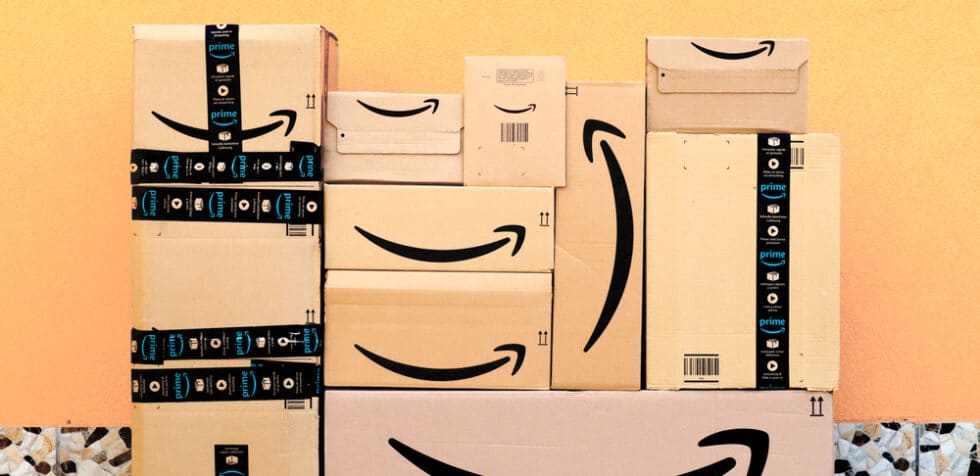
The Ultimate Guide to Selling and Winning on Amazon Seller Fulfilled Prime
Most people are familiar with the requirements that Amazon expects sellers to meet, but far fewer are aware of the roadblocks that make success hard to achieve. An even smaller number are aware of the strategies they can deploy to meet Amazon’s criteria and surpass them.

Amazon Buy With Prime: A Game-Changer for Customers, But a Trojan Horse for Merchants
For customers, Buy With Prime is a great service, but for ecommerce merchants, it’s a Trojan Horse. Amazon Prime circumvents the entire order checkout process from the merchant’s platform, and payment processing goes through Amazon

Protect Your Amazon Listings from Search Suppression, Hijackers, and Stockouts
Amazon is a competitive platform. You need to have a quality product, excellent listing content, and plenty of reviews to catch the attention of busy consumers

Up to 64% Lower Returns Processing Cost

Sellercloud Partners with Cahoot to Power Amazon-like Fulfillment
Cahoot has just announced a partnership and integration with Sellercloud so that users of the two solutions can enjoy seamless information sharing and complete data visibility across both platforms. Sellercloud and Cahoot together make multichannel selling easier for merchants by helping brands and retailers convert better by enabling Amazon-like free and fast delivery for shoppers across all channels. With the new native integration, sellers will enjoy powerful listing, products, order and inventory management from Sellercloud along with fast, efficient fulfillment and logistics from Cahoot.
Cahoot Founder and CEO, Manish Chowdhary explained the power of the partnership: “Brands and retailers are finding it increasingly hard to compete and grow profitably on marketplaces because consumers want an Amazon-like experience. However, achieving this is really hard for merchants who operate in slim margins. Together, Cahoot and Sellercloud make the task easier for sellers. With our integration, sellers can now optimize their strategy everywhere they sell, from product listings, pricing, inventory to next-level fulfillment and logistics. Sellers now have all of the data and insights they need to make fast and smart data-driven decisions.”
Moving Fulfillment from Cost Center to Profitable Growth Opportunity
Cahoot offers fulfillment services to online sellers who want to turn their operations from a cost center to a profitable growth lever. With its large and rapidly growing network of facilities nationwide, Cahoot is a preferred choice of sellers on marketplaces such as Amazon, Walmart, and eBay and ecommerce platforms such as Shopify, Magento, and BigCommerce. Cahoot transforms ecommerce order fulfillment from a headache into a fast, reliable, and affordable growth lever. Merchants win more customers with fast shipping, all while paying less for fulfillment thanks to Cahoot’s patented business model and innovative technology.
“Sellercloud is always looking for ways to help our sellers improve their customer experience, so we’re excited to partner with Cahoot. Cahoot’s innovative technology and proven ability to power affordable, fast fulfillment across all channels will help our sellers grow faster.” said Shelly Boisvert, VAR Partner Development Manager of Sellercloud
Sellercloud’s mission is to provide merchants with tools that empower them to compete and win in today’s highly competitive landscape. Its products span a comprehensive range of features to help multi-channel sellers manage their ecommerce business in one streamlined and powerful tool. With Sellercloud, merchants can consolidate catalog and inventory management, push changes from one place out to multiple channels, make smarter purchasing decisions, and more.
Growing Fearlessly Without Adding Complexity
Sellers that enjoy success on one channel often find themselves challenged to replicate that success on new ones due to the exponential increase in business complexity. Solutions like Cahoot and Sellercloud are designed to keep the back-office simple so merchants can easily expand and grow on new sales channels.
For most sellers, adding channels increases managerial complexity and puts additional strain on operations. Unlike other fulfillment providers, Cahoot is built specifically to enable sellers to scale fearlessly across channels as diverse as Seller Fulfilled Prime and B2B retail replenishment. No other 3PL can handle such a wide variety of use cases or do so at the high level that Cahoot does.
Sellercloud and Cahoot teamed up to enable a joint customer, Healthyline, to exploit many growth opportunities at once without being overwhelmed.
“We have ambitious growth goals for our own DTC site and in physical retail all at the same time. Using Cahoot and Sellercloud together gives us a powerful solution for managing all our channels” said Kristof Hommonai of Healthyline. He continued, “Before Cahoot, we were considering signing contracts with multiple 3PLs to put together a comprehensive nationwide solution for Amazon SFP. It was extremely complicated, expensive and we would have had to still find new technology to glue them all together. Consolidating with Cahoot helped us grow triple digits last holiday season and they’ve saved us money. We are now ready to offer the same Prime-like guaranteed fast delivery on all our channels.”
Cahoot is available for merchants looking to increase their online sales with affordable, fast delivery services across all popular selling channels, including Amazon, Walmart, eBay, Shopify, BigCommerce, and more.
ABOUT CAHOOT
Cahoot is the world’s first peer-to-peer eCommerce fulfillment network. The innovative Cahoot network enables online merchants to offer nationwide 1-day and 2-day deliveries at costs lower than what they’re paying for standard shipping today. Its best-in-class fulfillment software and highly vetted fulfillment partners combine to offer one of the highest SLAs in the industry, including late order cutoffs, fast receiving, and >99.95% on-time shipping. Through Cahoot, merchants help other merchants grow with the power of Amazon-like fulfillment on all channels.
ABOUT SELLERCLOUD
Sellercloud provides robust tools that can meet all of your operational needs – inventory and warehouse management, publishing listings to marketplaces, order processing, shipping, and even reporting. Sellercloud help e-commerce merchants optimize their operational workflow and focus on efficiency and growth. Founded in 2010, Sellercloud has 600+ clients, 2000+ Amazon and eBay accounts, employs 90 staff and is headquartered in Lakewood, New Jersey.
Offer 1-day and 2-day shipping at ground rates or less.
Related Blog Posts

The Ultimate Guide to Selling and Winning on Amazon Seller Fulfilled Prime
Most people are familiar with the requirements that Amazon expects sellers to meet, but far fewer are aware of the roadblocks that make success hard to achieve. An even smaller number are aware of the strategies they can deploy to meet Amazon’s criteria and surpass them.

Amazon Buy With Prime: A Game-Changer for Customers, But a Trojan Horse for Merchants
For customers, Buy With Prime is a great service, but for ecommerce merchants, it’s a Trojan Horse. Amazon Prime circumvents the entire order checkout process from the merchant’s platform, and payment processing goes through Amazon

Protect Your Amazon Listings from Search Suppression, Hijackers, and Stockouts
Amazon is a competitive platform. You need to have a quality product, excellent listing content, and plenty of reviews to catch the attention of busy consumers

Up to 64% Lower Returns Processing Cost

For Prime 1-Day Shipping, Amazon Wants Sellers to Send It More Stuff
In this article
Amazon is offering steep discounts of up to 75% on warehouse storage fees to incentivize merchants to store more of their popular products with the company, in an effort to facilitate its transition to a one-day shipping standard for Prime members, according to CNET.
The promotion will begin in June and run through January; to qualify, sellers will need to have sold 60 or more of a product per month or have products specifically selected by Amazon. They’ll also have to keep the level of inventory they supply to Amazon at a certain level.

Here’s what it means: The push for one-day free shipping can’t be a unilateral move by Amazon: It’ll need sellers to work with it.
One-day shipping is likely feasible for Amazon, but more than half its sales come from third-party sellers, making them critical to achieving this new goal. Third-party merchants were responsible for 58% of Amazon’s sales in 2018, an enormous jump from 3% in 1999.
Because of this, if Amazon wants to have any chance of making the lion’s share of the items on its marketplace available for one-day delivery, it’ll need help from those sellers. It shouldn’t be too difficult to get them on board, though, given that one-day shipping is likely to increase consumers’ enthusiasm for Amazon, leading to more sales for the sellers working with it.
The bigger picture: Amazon’s one-day shipping goal will highlight the importance of its relationship with sellers (both FBA and FBM doing their own ecommerce order fulfillment) as well as the fine-grain control it has over its private-label products.
Offer 1-day and 2-day shipping at ground rates or less.
Related Blog Posts

The Ultimate Guide to Selling and Winning on Amazon Seller Fulfilled Prime
Most people are familiar with the requirements that Amazon expects sellers to meet, but far fewer are aware of the roadblocks that make success hard to achieve. An even smaller number are aware of the strategies they can deploy to meet Amazon’s criteria and surpass them.

Amazon Buy With Prime: A Game-Changer for Customers, But a Trojan Horse for Merchants
For customers, Buy With Prime is a great service, but for ecommerce merchants, it’s a Trojan Horse. Amazon Prime circumvents the entire order checkout process from the merchant’s platform, and payment processing goes through Amazon

Protect Your Amazon Listings from Search Suppression, Hijackers, and Stockouts
Amazon is a competitive platform. You need to have a quality product, excellent listing content, and plenty of reviews to catch the attention of busy consumers
Amazon and Apple Get Co-Opetitive
In this article
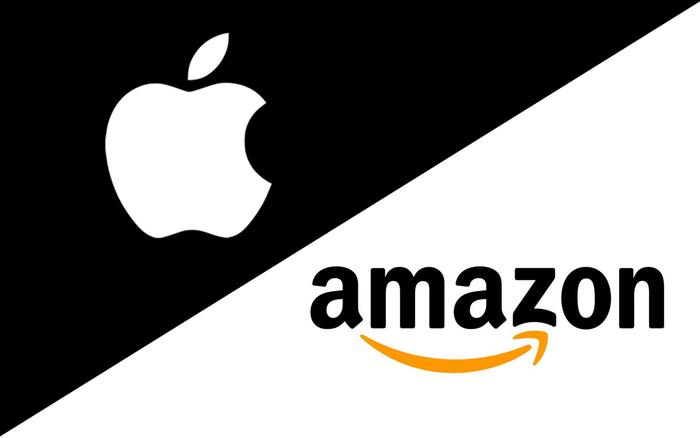
More Apple products are getting the stamp of approval from Amazon, which will officially enable the sale of a range of new devices on-site from the tech brand.
Amazon is approving the sale of the latest iPad Pro, iPhone and Apple Watch models by authorized resellers rather than just through the third-party marketplace, according to TechCrunch. Independent sellers will, in fact, have their listings removed. Amazon already allows the official sale of some products, such as laptops and Beats headphones.
The change in the trade partner relationship raises questions about the extent to which Amazon considers Apple to be a competitor and what Amazon’s long-term plan might be for the device market. The two companies have been involved in an ongoing push/pull over their competitive devices, with Amazon sometimes removing Apple products from its site or Apple refusing to play ball with Amazon in some other manner.
Offer 1-day and 2-day shipping at ground rates or less.
Recent Blog Posts

Packaging Design That Will Make Fulfillment Easy and Cut Costs
E-commerce Revolution with Strategic Packaging Solutions Like anyone in the e-commerce world, small business owners are always looking for ways to streamline their operations and

USPS Hazmat Shipping Guidelines – How to Ship Fast While Staying Compliant
Hazardous Materials What is a Hazardous Material? What Items Are HAZMAT? Classes of HAZMAT Items What Classes Can Ship on Various USPS Services? What Changes

Protect Your Amazon Listings from Search Suppression, Hijackers, and Stockouts
Amazon is a competitive platform. You need to have a quality product, excellent listing content, and plenty of reviews to catch the attention of busy
Amazon Officially Calls Out UPS and FedEx as Competitors
In this article
Amazon has long downplayed its delivery ambitions, claiming its own shipping and delivery services are only intended to “supplement” existing partners such as UPS and FedEx, saying it just wanted to address capacity shortfalls. Until now, that is.
Amazon has long downplayed its delivery ambitions, claiming its own shipping and delivery services are only intended to “supplement” existing partners such as UPS and FedEx, saying it just wanted to address capacity shortfalls. Until now, that is.
In its 2018 10K filing, Amazon for the first time listed “transportation and logistics services” as a competitive sector in the boilerplate “risk factors” section, along with the existing list of categories including “physical, ecommerce, and omnichannel retail, ecommerce services, digital content and electronic devices, web and infrastructure computing services.”
Amazon clearly needs to get a handle on the growth of its shipping spend, which hit $27.7 billion in 2018, up 31% from $21.1 billion in 2017 and up a whopping 72% from $16.2 billion in 2016. For 2018, fulfillment represented 14.6% of Amazon’s net sales. Analysts see the company’s many and growing logistics initiatives as a way to offset some of that cost.
Offer 1-day and 2-day shipping at ground rates or less.
Related Blog Posts

The Ultimate Guide to Selling and Winning on Amazon Seller Fulfilled Prime
Most people are familiar with the requirements that Amazon expects sellers to meet, but far fewer are aware of the roadblocks that make success hard to achieve. An even smaller number are aware of the strategies they can deploy to meet Amazon’s criteria and surpass them.

Amazon Buy With Prime: A Game-Changer for Customers, But a Trojan Horse for Merchants
For customers, Buy With Prime is a great service, but for ecommerce merchants, it’s a Trojan Horse. Amazon Prime circumvents the entire order checkout process from the merchant’s platform, and payment processing goes through Amazon

Protect Your Amazon Listings from Search Suppression, Hijackers, and Stockouts
Amazon is a competitive platform. You need to have a quality product, excellent listing content, and plenty of reviews to catch the attention of busy consumers
3PL vs In-House Logistics: How to Shift From In-House Warehouse to a 3PL | Cahoot
In this article
 14 minutes
14 minutes
- Understanding In-House Logistics and 3PL
- Definition of In-House Logistics
- Definition of Third-Party Logistics (3PL)
- Advantages and Disadvantages of In-House Logistics
- 5 Signs It’s Time to Switch to an Outsourced Third-Party Logistics Company
- How to Shift From In-House Warehouses to an Outsourced 3PL
- In-House or Outsourced? Cahoot Lets You Do Both
- Frequently Asked Questions
As your ecommerce business grows, the operations behind it become more complex. One of the most significant is warehousing and order fulfillment, which must scale alongside sales and customer growth to remain profitable.
While in-house order fulfillment may be cost-effective initially, those expenses can skyrocket as you need more warehousing space, on-demand workers, and closer relationships with shipping providers. The decision-making process of 3pl vs. in-house becomes critical as you weigh factors like control, scalability, cost, and business needs to determine the most suitable fulfillment method for your company.
For most growing ecommerce businesses, handling order fulfillment is a large and time-consuming role that they didn’t sign up for. Instead, many merchants are outsourcing this task to reliable third-party logistics (3PL) providers. In this article, we’ll discuss the benefits of working with an order fulfillment partner and quick steps on how to outsource your logistics.
Understanding In-House Logistics and 3PL
As ecommerce businesses grow, understanding the logistics options available becomes crucial. Two primary approaches are in-house logistics and third-party logistics (3PL). Each has its unique benefits and challenges, and choosing the right one can significantly impact your business’s efficiency and customer satisfaction.
Definition of In-House Logistics
In-house logistics refers to the management and execution of logistics operations within a company’s own facilities and resource constraints. This approach involves handling all aspects of the supply chain internally, including inventory management, order fulfillment, warehousing, and transportation. By keeping these operations in-house, businesses maintain complete control over their logistics processes, allowing them to tailor their operations to meet specific customer needs and expectations. This level of control can lead to more personalized service and potentially higher customer satisfaction, as businesses can directly oversee every step of the order fulfillment process. But it’s inherently more expensive.
Definition of Third-Party Logistics (3PL)
Third-party logistics (3PL) involves outsourcing logistics operations to a specialized provider. A 3PL provider manages and executes logistics functions on behalf of a business, including warehousing, inventory management, order fulfillment, and transportation. By leveraging the expertise and resources of a 3PL provider, businesses can optimize their supply chain operations and improve customer satisfaction through improved fulfillment reliability. This approach allows companies to benefit from the advanced technology, infrastructure, and industry knowledge that 3PL providers offer, often resulting in more efficient and cost-effective logistics operations. These benefits extend to the use of “Micro-Fulfillment Centers” strategically located to enable even faster, more localized delivery. Cahoot’s massive nationwide local reach can be considered the top option in this category.
Advantages and Disadvantages of In-House Logistics
When deciding between in-house logistics and outsourcing to a 3PL provider, it’s essential to consider the pros and cons of each approach. In-house logistics offers certain advantages but also comes with its own set of challenges.
Pros of In-House Logistics:
- Complete Control: Businesses have full control over their logistics processes, allowing for customization and direct oversight.
- Tailored Operations: Companies can tailor their logistics operations to meet specific customer needs and expectations, potentially enhancing customer satisfaction.
- Direct Management: In-house logistics enables direct management of inventory and warehouse operations, which can lead to more efficient order fulfillment, but more importantly, inventory accountability.
Cons of In-House Logistics:
- Higher Costs: Managing logistics in-house can be expensive, requiring significant investment in warehouse space, technology, and staff (which can be unpredictable).
- Resource Intensive: In-house logistics demands substantial resources, including time, personnel, and capital, which can strain a growing business.
- Scalability Issues: As order volumes increase, scaling in-house logistics operations can be challenging and may lead to inefficiencies or delays.
By weighing these pros and cons, businesses can make an informed decision about whether to keep logistics operations in-house or outsource to a 3PL provider.
5 Signs It’s Time to Switch to an Outsourced Third-Party Logistics Company
If you face logistics and shipping issues, reexamine how you ship. Aligning logistics strategies with evolving customer expectations is crucial for business growth. As you analyze your operations, keep the following five indicators in mind to determine if you should outsource order fulfillment.
1) Your Logistics are Hindering Your Growth
Today’s consumers place significant demands on logistics. For many small ecommerce businesses, that means scaling at the pace of your fulfillment. If you’re canceling orders because you can’t keep up with the logistics, or your sales are limited by your order fulfillment capacities, it’s time to invest in an outsourced 3PL company.
Similarly, if your organization’s in-house logistics management is bottlenecking and you’re slowing the growth of your ecommerce company to invest in internal fulfillment services, consider whether a 3PL is a better and ultimately cheaper solution.
2) Items are Getting Lost
As order volume rises, so do the chances of mistakes, especially if you’re unable to expand your warehousing capacity quickly enough. Orders get missed or lost, items get delivered late, and tasks fall through the cracks.
Outsourcing logistics operations to a third-party logistics provider (3PL) can mitigate these issues. A 3PL company typically uses some form of distributed order management software to monitor inventory and shipments, which greatly reduces the occurrence of order errors.
Beyond that, packages have a higher tendency of getting lost or stolen when shipped to big city addresses, so hiring a 3PL provider with consistent shipping insurance options and Shipment Insights will avoid the expenses associated with missing items and help your customer service team offer better resolutions.
3) You’re Relying on Manual Order Tracking
Many ecommerce stores start out processing orders manually: You place an incoming order into a spreadsheet, pack it, and manually update shipping. From there, you write down the actual cost of packaging, postage, and other details.
This process is slow, requires significant human effort, and introduces human error. It also fails to provide the metrics and insights obtained with automation. Additionally, managing in-house operations involves substantial investment in advanced fulfillment technology, which can be a significant challenge and cost for businesses. A modern 3PL company will have the shipping software in place using blockchain technology for supply chain transparency, including up to the minute tracking with precise current package locations. Intelligent software also automatically collates costs, expenses, and revenue to better project profitability, increasing trust and collaboration between businesses and their fulfillment partners, leading to more efficient and reliable operations.
4) Deliveries are Late
More than 90% of Americans expect a shipment to arrive within two to three days. However, if your warehousing and shipping network is overburdened, you’ll likely be unable to keep up with projected shipping deadlines.
Rising shipping costs can significantly impact profitability, but a 3PL can help mitigate these costs through efficient distribution centers and optimized shipping methods.
If your shipments are increasingly falling behind, that’s a good indication you lack the infrastructure to keep up with current demand. A 3PL, on the other hand, will have that infrastructure in place for accurate tracking and delivery projection timelines so customers won’t be disappointed due to poor order fulfillment.
5) Order Fulfillment Costs are Too High
Handling order fulfillment in-house means negotiating your own contracts and potentially missing out on savings that come from large volumes. By collaborating with 3PL providers that specialize in supply chain management, businesses can improve their efficiency and reduce costs. When you work with a 3PL that can leverage economies of scale, they often can negotiate more favorable pricing on packaging, storage, as well as shipping.
In addition to better rates, working with a 3PL may help eliminate other overhead expenses, such as the need to hire, train, and manage warehouse staff, as well as rent your own prep and storage locations.
Finally, if you ship from a single location—as is common with many in-house order fulfillment setups—you may be overspending on expensive shipping for orders far away from your warehouse. Working with a fulfillment partner that has locations on both the West and East Coasts, for example, can help shorten the distance items need to travel and allow for more ground shipping while meeting shipping speed service level agreements.
How to Shift From In-House Warehouses to an Outsourced 3PL
Partnering with a 3PL provider can remove the burden of warehousing overhead and infrastructure, freeing your organization to focus on sales, production, and growth.
While there are numerous benefits, including potential cost savings, reduced carbon footprint, and faster, more reliable shipping, keep in mind that outsourcing order fulfillment is a complex process.
Below are our suggestions for making the switch.
1) Pick a Reliable 3PL Company
Knowledge is power, and researching the best 3PL company for your unique brand is half the battle in making a smart, strategic switch.
Outsourcing logistics to third-party logistics providers offers significant advantages, including their expertise, scalability, and cost-effectiveness, which can enhance operational efficiency and customer satisfaction compared to managing logistics in-house.
There are tens of thousands of 3PL providers on the market, but finding a good fit for your ecommerce business requires effort. Choose a 3PL partner that matches your business growth, technology needs, and distribution needs.
Ask yourself:
- Does the 3PL provider have geolocations that match your customer base?
- Can you scale with this 3PL provider, or will you quickly outgrow them?
- Are they small enough to be a partner?
- Do they offer customization or services like packing slips, marketing material, etc.?
- Do they support all of your channels?
- Do they support the circular economy (growing emphasis on sustainability and reverse logistics, product repair, and remanufacturing)?
- Do they have a history of operation and a stable client base?
- Does their software integrate with yours?
- Does the 3PL provider meet all of your needs (fulfillment, reverse logistics, kitting, subscription boxes, etc.)?
- Do they have security in place? What about certifications like FDA or DEA? Do you need HAZMAT?
- What’s their customer service like?
Order fulfillment is a critical component of your success, so take your time choosing the right 3PL for your business.
2) Do a Test Run
Generally, it’s smart to try out the 3PL with a small amount of inventory or a few products. This gives you the chance to get to know the 3PL provider before committing all of your inventory to their care. For this test run, it’s helpful to choose a fast-moving product that you know will sell quickly. (You may also want to order a few products yourself to see how they arrive.)
Route a few orders to the 3PL warehouse and monitor their performance to decide if they’re a good fit for your ecommerce business.
For example, do orders arrive on time? Are customers happy with how orders arrive? How is their tracking system? Is inventory management complicated or easy to use? Do they employ order routing?
Make the most of this hands-on trial run so you know what you’re getting into and feel confident you’ve chosen the right 3PL partner.
3) Send in Your Inventory for Inventory Management
Arrange distribution with your 3PL company. You may have existing warehoused inventory you want to ship directly to the 3PL. Other times, you’ll want to keep that inventory and simply route all new deliveries from your suppliers or manufacturers directly to the 3PL warehouse.
The option you choose will depend on total inventory, its movement speed, and how much inventory you want to send to the 3PL.
Tip: Don’t send in aged or deadstock. If you don’t foresee the items selling in the future, it will just cost you more to send into your order fulfillment center and you’ll end up having to pay long-term storage fees.
4) Decide How to Split Inventory
A recommended best practice is to keep some inventory on hand. This is important whether you handle returns yourself or outsource to a 3PL.
Maintaining a small amount of inventory allows you to take care of emergencies and provides a safety net in case problems arise with distribution. Often, an 80/20 split (with 80% of inventory at the 3PL) is a safe bet, but it’s important to do the math yourself to decide if you need to split inventory and how much.
You might want to retain more inventory in certain situations. For example, if you have stock that’s large and slow moving, you may decide to keep it in house. This will alleviate most of the pressure from your own warehousing without incurring extra storage costs with slow-moving products.
Leverage a distributed order management system when splitting inventory between your own internal warehouses and 3PL warehouses. This tool will help ensure accurate counts across different inventory locations and strategic order routing depending on availability, location, sales channel, and more.
5) Monitor and Refine
Your 3PL must be able to adapt to your growing ecommerce business. Partnering with a 3PL company is a long-term commitment, which means keeping an eye on data, communicating with your 3PL provider, and growing together.
In turn, your partner has to adjust to your expansion, add capabilities to meet your growing needs and offer the data you require to track stock and order performance.
In-House or Outsourced? Cahoot Lets You Do Both
What if you already have invested significant time and energy into your own operations, and don’t want to give up on that entirely when moving to an outsourced partner? Most 3PLs aren’t optimized to work alongside merchant-owned order fulfillment, but Cahoot has rewritten the rules with a flexible fulfillment network and shipping software.
Cahoot enables merchants with in-house ecommerce order fulfillment to strategically add Cahoot locations across the country as they expand while retaining their existing operations.
Deploy inventory in Cahoot locations along with your own facility, and then let the intelligent, automated Cahoot shipping software rate shop for labels and choose the best facility to fulfill each order as it comes in. If the order comes in near your facility, you’ll fulfill it. If it’s near a Cahoot location that you’re using, they’ll fulfill it. You get the benefits of nationwide USA order fulfillment centers while still making the most of the investment you’ve put into your existing facility.
Of course, if this article has convinced you that it’s time to move on from managing your own order fulfillment entirely, Cahoot will happily work with you to take all of your inventory and power your online channels with low cost and fast delivery.Want to learn more? Contact Cahoot to access affordable, flexible order fulfillment for merchants of all sizes.
Frequently Asked Questions
What is in-house logistics?
In-house fulfillment refers to the management and execution of logistics activities or operations within an organization’s facilities or infrastructure, rather than outsourcing these functions to external third-party logistics (3PL) providers or logistics companies. With in-house storage, you as an entrepreneur have full control over your goods and store your items in your own company building instead of having them stored by an external service provider.
What are the disadvantages of in-house fulfillment?
While outsourcing critical activities might lead to a loss of operational control, in-house fulfillment faces the risk of over-reliance on internal resources, which may not always be sufficient or optimal.
What is the difference between logistics and third-party logistics?
While contract logistics companies typically help arrange transportation and routes, a 3PL company handles much more than just transportation; 3PLs provide a full suite of logistics services, from warehousing and order fulfillment, to inventory management and automated shipping.
Written By:
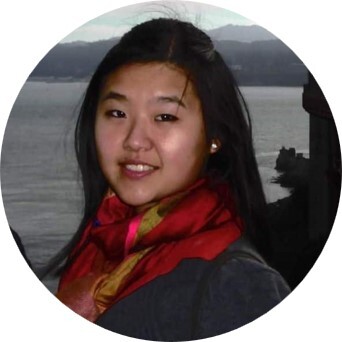
Rachel Go
This is a guest post from Rachel Go. Rachel is a content marketer and strategist at Flxpoint, an enterprise ecommerce operations platform. Flxpoint enables merchants and brands to unify and automate every aspect of your ecommerce operations and scale without manual processes or custom development slowing you down.

Up to 64% Lower Returns Processing Cost



